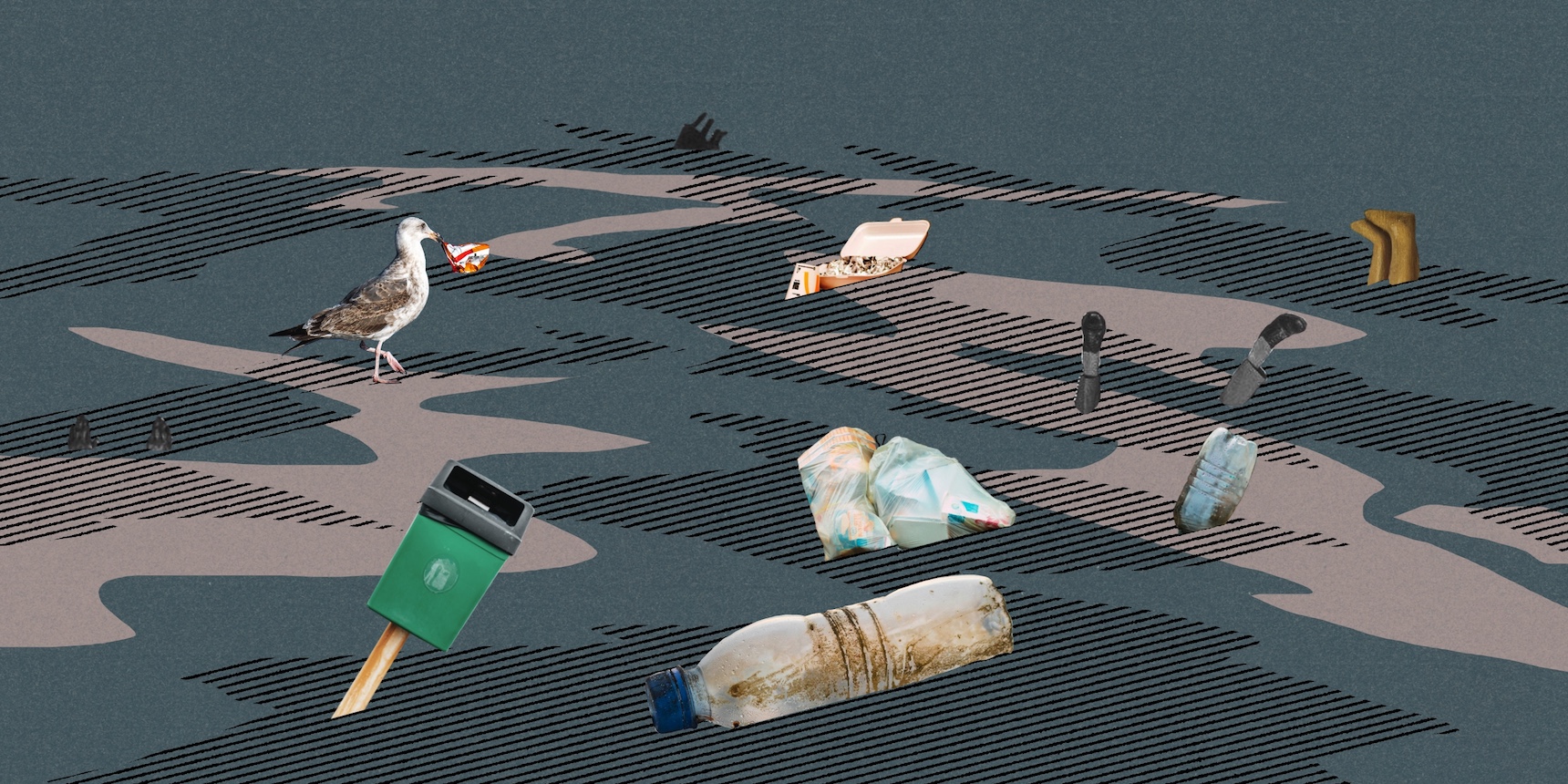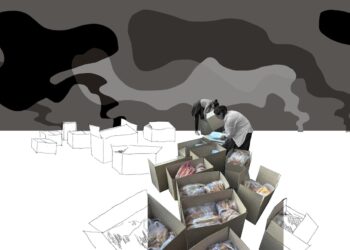
There is a heightened awareness about the damage caused by littering in Armenia, however, despite public service announcements and various civic initiatives, the problem persists throughout the country. Waste management, in general, has been on the agenda both federally and locally as well, including the adoption of a number of laws, but these issues remain unresolved.
Back in January 2020, Armenia’s Prime Minister Nikol Pashinyan held consultations to discuss the country’s waste management strategy development process and had noted at the time that the biggest problem with the current system was that waste is simply transported from point A to point B, without proper consideration given to what happens to the waste at point B.
The Waste Management System Strategy [henceforth the Strategy] was adopted in April 2021, with the aim of implementing a sustainable waste collection, transportation, and disposal and recycling system. When a large fire broke out in May 2023 in Armenia’s largest landfill in Nubarashen, a suburb of the capital, it drew attention once again to the need for regulation. The fire raged for about ten days and covered most of the capital with clouds of smoke.
“Until a waste processing facility is established in our country…there will be more fires: landfills like those in our country cannot be protected from fires,” says environmentalist Silva Adamyan.
According to the Strategy, Armenia’s current landfills do not adhere to any international, urban planning, environmental, or sanitary standards. They are only used for the accumulation of trash, they lack proper fences, incoming waste registration system, washing and disinfection equipment for garbage trucks, and soil to cover the waste. This leads to spontaneous combustion, which causes air, water and soil pollution.
As of 2020, there were 297 landfills in Armenia. Out of 501 communities, waste collection is carried out in 443 by 274 organizations. However, 46,000 people live in 58 rural settlements that are not part of the waste collection system, which amounts to about 1.6 % of the total population. These people largely throw garbage indiscriminately.
A 2018 survey revealed that residents of Arevik, Karnut, Kamo, and Jrarat communities throw their trash wherever is convenient. In addition, several Karnut residents admitted to throwing waste into the creek in their village.
Adamyan notes that waste management and landfills in Armenia fall far short of international standards, and that the government is not taking the necessary steps to regulate the sector.
“There is no state strategy, and people still don’t understand that trash cannot be disposed of in the environment. Materials littering nature, which may take hundreds of years to decompose, cause significant environmental damage,” Adamyan explains.
Vache Terteryan, the Deputy Minister of Territorial Administration and Infrastructure (TAI), has stated that there are no clear measurements or data on the amount of domestic waste generated in Armenia. However, to approximate the amount of generated waste, the indicator of 0.6 kg/person per day is used for cities (for Yerevan: 0.9-1.1 kg/person), and 0.4 kg/person for rural areas. According to the Statistical Committee, in 2021, approximately 1,845,000 cubic meters of household solid waste were transported to waste accumulators.
Will a Sanitary Landfill Be Built?
The Kotayk and Gegharkunik Solid Waste Management project has been in operation since 2016 with the assistance of the European Bank for Reconstruction and Development (EBRD). The project’s goal is to build a sanitary landfill that meets EU standards and establish an effective solid waste collection and management system. The landfill, valued at 11 million euros, began construction in spring 2021 and is expected to be operational by summer of 2024. The city of Martuni will have a transfer station where waste will be collected, processed, compacted, and then transported to the landfill. To prevent soil, subterranean water, and air pollution the landfill will have appropriate infrastructure, including administrative buildings. Terteryan stated that they are currently working on completing the construction.
He explains that Hrazdan’s sanitary landfill will ensure the safe disposal of household waste generated in the regions of Kotayk and Gegharkunik. “The landfill is covered with a geomembrane liner, which prevents soil, surface water and groundwater from being contaminated by leachate,” he says.
Once the Hrazdan sanitary landfill is operational, approximately 55 landfills in the Kotayk and Gegharkunik regions will be shut down.
The EBRD will support the construction of sanitary landfills in the remaining eight regions, according to the Deputy Minister.
However, Silva Adamyan is of the opinion that building sanitary landfills won’t solve the problem. “By and large, the situation will not change,” she insists. “The garbage will not be recycled. We need a competent approach at the state level; we need a waste processing plant, because there is no other way to solve these difficult waste collection and landfill problems.”
According to Terteryan, there are currently no approved plans for the development of a waste processing plant in Armenia, even though waste recycling is a key issue for the Waste Management Strategy.
Nubarashen Is Still Waiting
Every day, the landfill in Nubarashen collects 1,000 to 1,300 tons of household waste and covers an area of 52.3 hectares. The landfill was built in the 1960s but was only recently enclosed with a perimeter fence.
In 2009, the Yerevan Municipality and the Japanese Shimizu Corporation implemented a biogas collection and burning project in the Nubarashen landfill. The project introduced a gas collection system, whereby methane gas is pushed into a central vertical pipe and burned through cylinders with drilled wells and horizontal gas pipes over an eight-hectare area. The project was scheduled to last 16 years; however what happens once the deadline is reached in three years is still unknown.
Since 2016, there has been a plan to establish a new 32 hectare sanitary landfill next to the existing Nubarashen landfill. This is part of the Yerevan Solid Waste Management program. The program also involves closing the existing Nubarashen and Ajapnyak landfills.
In August 2023, Terteryan stated that there were ongoing discussions regarding the construction of a new sanitary landfill in accordance with European Union standards in the area adjacent to the Nubarashen landfill.
Natalya, a resident of the Erebuni suburb adjacent to Nubarashen, explains, “For days, the air was thick and full of smoke. When a fire breaks out in that landfill, it is so challenging to extinguish it that smoke fills the area.”
According to studies conducted by the Ministry of Environment to determine the effects of landfill fires, the dust level in several administrative districts of Yerevan during the fire was 1.1-2.4 times higher than the permissible limit. Furthermore, the nitrogen dioxide content was 1.1-1.3 times higher than the permissible limit, and the sulfur dioxide content was 1.1 and 1.3 times higher.
On May 19, one of the air quality monitoring stations erected by the municipality staff’s environmental protection department in five locations across Yerevan issued a warning that the level of dust was in an unhealthy range.
According to Vardanush Grigoryan, Secretary General of Armenia’s Ministry of Health, air pollution and smoke emitted into the air can increase the risk of developing various non-infectious diseases, particularly cardiovascular disease, acute and chronic respiratory disorders, lung cancer, and others. Grigoryan asserts that the effect depends on the content, quantity, and duration of the released compounds.
To mitigate or prevent the potential danger to human health caused by atmospheric air pollution, the Ministry of Health is working closely with all interested parties to take the necessary steps.
The Yerevan Waste Removal and Sanitary Cleaning community institution was established in 2019 to handle waste collection and sanitary cleaning tasks within the administrative territory of Yerevan, funded by the city’s budget. This has led to an improvement in the capital’s waste collection situation, and the closure of trash chutes in apartment buildings has significantly improved sanitary conditions in shared spaces. However, according to experts, small-scale private initiatives are still the only ones conducting waste sorting and processing, with serious shortcomings in terms of environmental, health, and safety issues. As a result, most of the waste generated in the country remains a major problem.
Law & Society
Nurturing a Culture of Giving Back: The New Law on Voluntary Work
Volunteering has become widespread in Armenia in recent years. However, it has only recently received legal regulation. The critical role of volunteers became especially evident after the Azerbaijani attack on Artsakh on September 19, 2023.
Read moreMission Incomplete: Armenian Police Reforms
The Pashinyan Government's reforms of the police and other institutions promised to bring long-awaited changes to Armenia. While some progress was registered, there have been setbacks and backsliding, particularly after the defeat in the 2020 Artsakh War. Police reform has been no exception.
Read moreAssessing Quality or Posing Challenges for Educators?
In 2022, the Armenian government introduced a voluntary teacher certification program. Teachers who pass with high scores receive higher salaries, however, problems persist in the process.
Read moreA Fancy Resort, Protesting Villagers and Politics on Mount Aragats
Armenia’s newest ski resort, located on the slopes of Mount Aragats, partially opened last year. While Myler Mountain Resort is expected to become a hub for winter sports enthusiasts, complaints from villagers about the way it is being developed have gone unheeded.
Read moreWhen Untreated Sewage Is Dumped Into Water Resources
Most settlements in Armenia lack proper sewerage systems. Even when such systems exist, the scarcity of sewage treatment plants leads to untreated waste being dumped into water resources.
Read more





